
How to Use MW LRS-350-48: Examples, Pinouts, and Specs
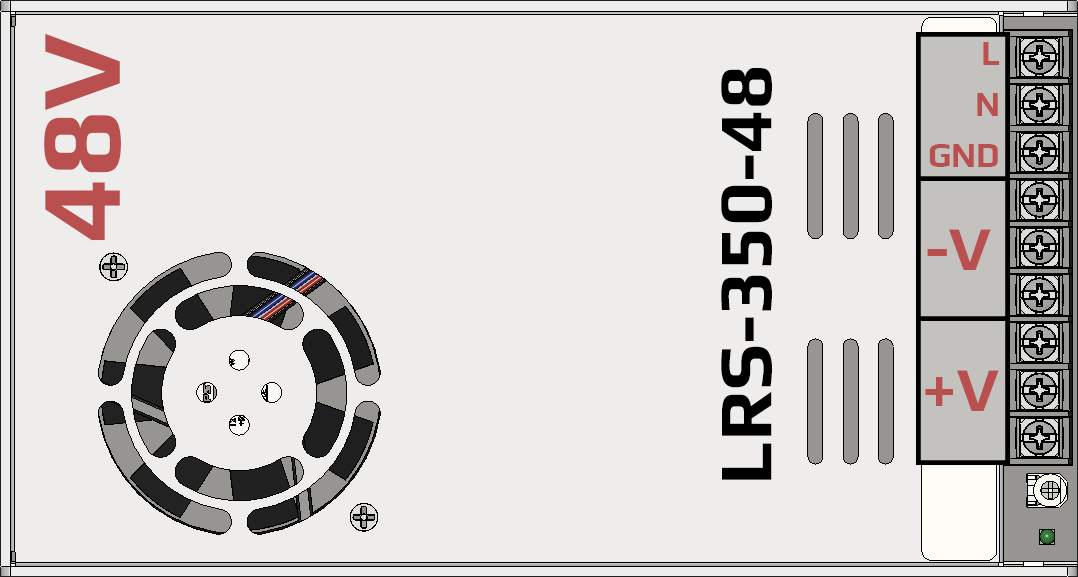
 Design with MW LRS-350-48 in Cirkit Designer
Design with MW LRS-350-48 in Cirkit DesignerIntroduction
The MW LRS-350-48 is a high-efficiency, enclosed switching power supply unit (PSU) that delivers a consistent 48V DC output. With a power rating of 350 watts, it is designed to be versatile for use in a wide range of industrial and commercial electronic applications. Common applications include automation machinery, industrial control systems, mechanical and electrical equipment, and LED displays.
Explore Projects Built with MW LRS-350-48
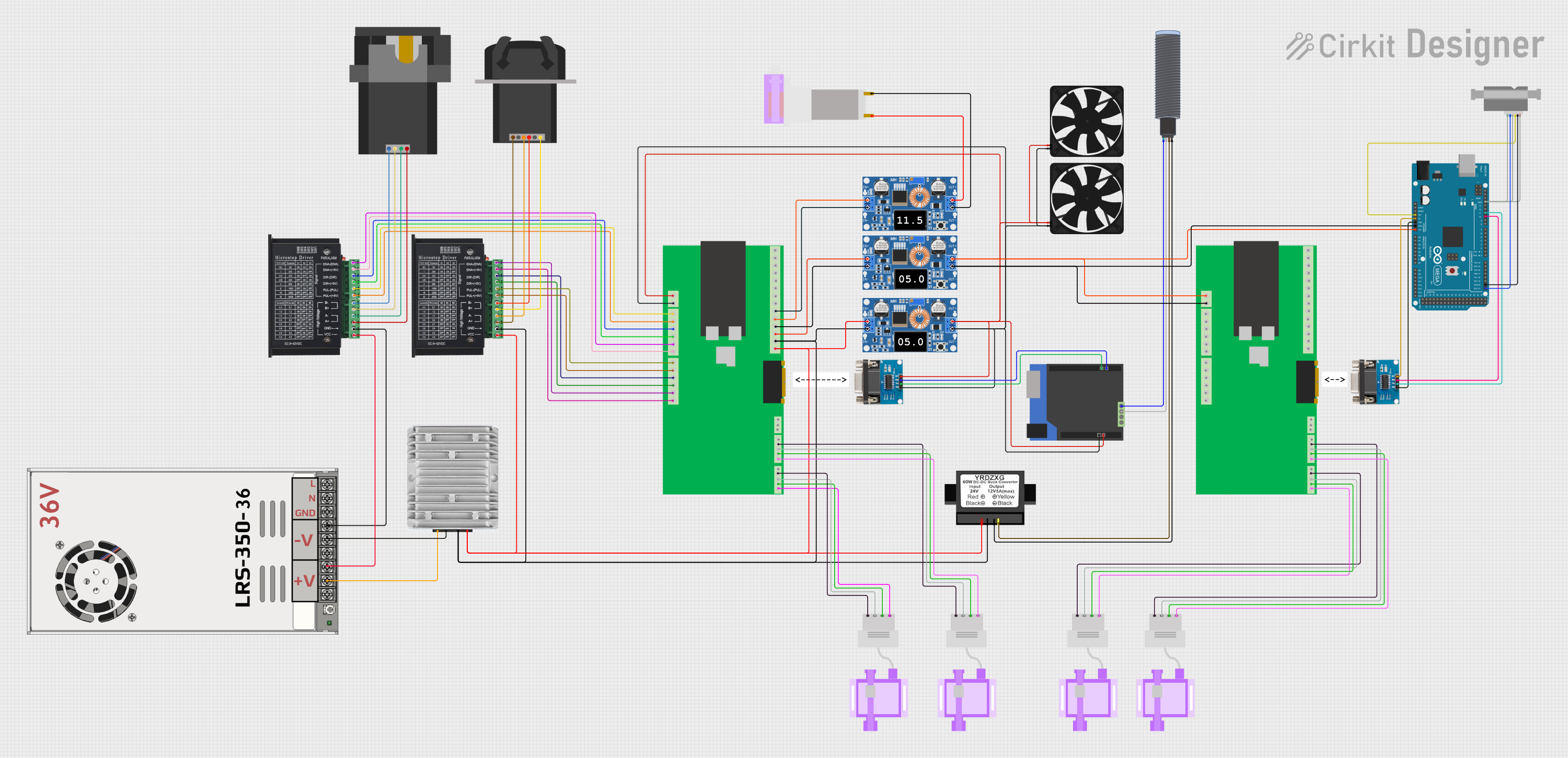
 Open Project in Cirkit Designer
Open Project in Cirkit Designer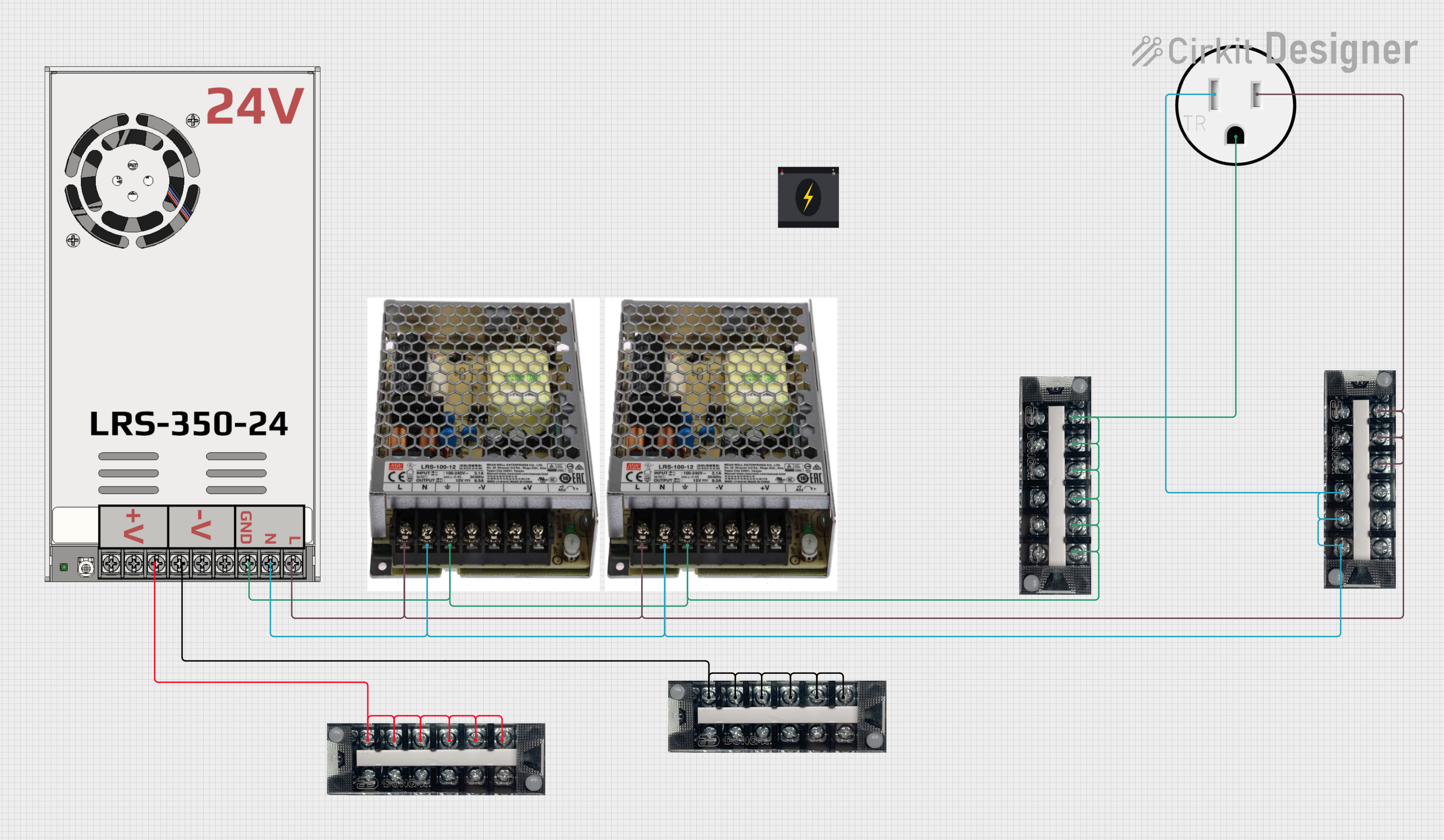
 Open Project in Cirkit Designer
Open Project in Cirkit Designer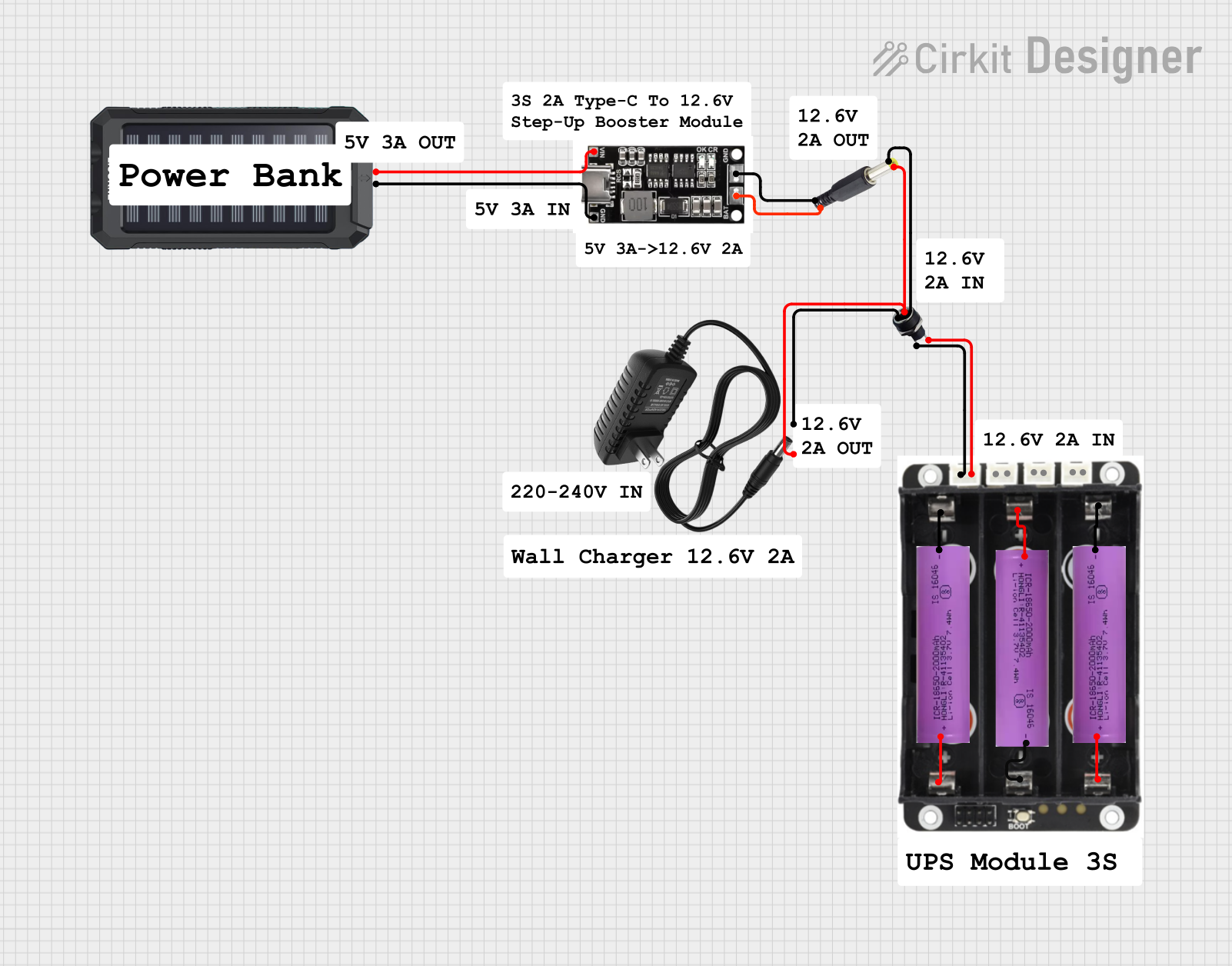
 Open Project in Cirkit Designer
Open Project in Cirkit Designer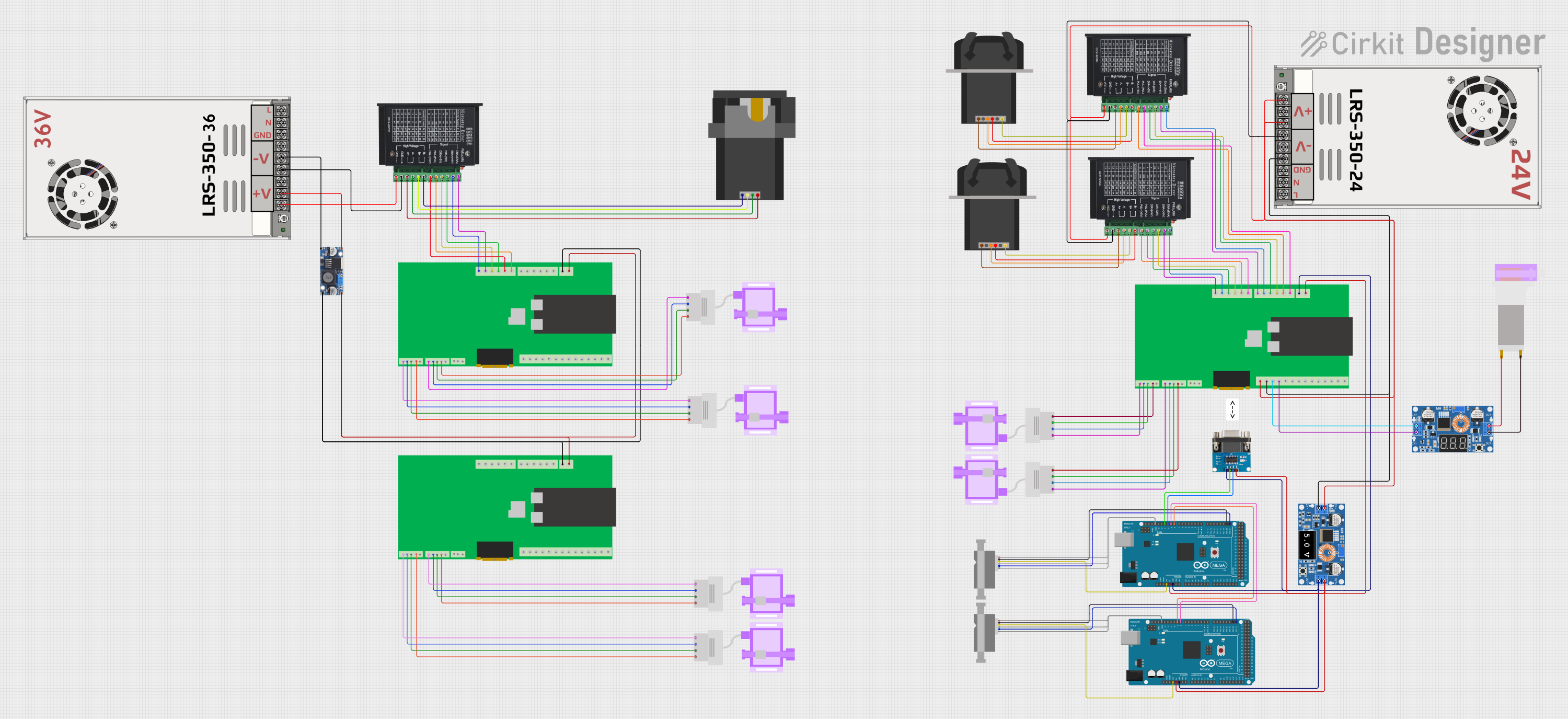
 Open Project in Cirkit Designer
Open Project in Cirkit DesignerExplore Projects Built with MW LRS-350-48

 Open Project in Cirkit Designer
Open Project in Cirkit Designer
 Open Project in Cirkit Designer
Open Project in Cirkit Designer
 Open Project in Cirkit Designer
Open Project in Cirkit Designer
 Open Project in Cirkit Designer
Open Project in Cirkit DesignerTechnical Specifications
General Features
- Model: MW LRS-350-48
- Power Rating: 350W
- Output Voltage: 48V DC
- Output Current: 7.3A
- Input Voltage Range: 110-240V AC
- Frequency Range: 47-63Hz
- Efficiency: >89%
- Operating Temperature: -25°C to +70°C
- Dimensions: 215 x 115 x 30 mm (L x W x H)
- Certifications: UL, CE, CB, TUV
Pin Configuration and Descriptions
| Pin No. | Description | Notes |
|---|---|---|
| 1 | AC L (Live) | Input power (Live) |
| 2 | AC N (Neutral) | Input power (Neutral) |
| 3 | FG (Frame Ground) | Protective earth ground |
| 4 | V- (DC Output -) | Negative output terminal |
| 5 | V+ (DC Output +) | Positive output terminal |
| 6 | +V ADJ | Output voltage adjustment (potentiometer) |
Usage Instructions
Integration into a Circuit
- Wiring AC Input: Connect the AC live and neutral wires to pins 1 and 2, respectively. Ensure that the input voltage matches the PSU's specifications.
- Grounding: Connect the frame ground (FG) to the earth ground of your system to prevent electrical shocks and interference.
- DC Output: Connect your load to the V+ and V- terminals (pins 4 and 5). Ensure that the load does not exceed the PSU's maximum current rating of 7.3A.
- Adjusting Output Voltage: If necessary, fine-tune the output voltage using the +V ADJ potentiometer (pin 6).
Best Practices
- Always disconnect power before making any connections to the PSU.
- Use appropriate wire gauges for AC input and DC output to handle the current without overheating.
- Ensure proper ventilation around the PSU for cooling, and do not cover the ventilation holes.
- Protect the PSU from dust and moisture to prevent short circuits and other failures.
Troubleshooting and FAQs
Common Issues
- No Output Voltage: Check AC input connections and ensure the PSU is receiving power. Verify that the output terminals are correctly connected.
- Voltage Fluctuations: Ensure that the load does not exceed the PSU's capacity. Check for loose connections and inspect the +V ADJ potentiometer for proper adjustment.
- Overheating: Make sure there is adequate ventilation. Check if the ambient temperature is within the operating range.
FAQs
Q: Can the MW LRS-350-48 be used with an Arduino UNO? A: Yes, but a voltage regulator or buck converter is needed to step down the voltage to 5V or 3.3V suitable for the Arduino.
Q: Is it possible to adjust the output voltage below 48V? A: Yes, the output voltage can be fine-tuned using the +V ADJ potentiometer.
Q: What is the warranty period for the MW LRS-350-48? A: The warranty period may vary. Please check with the manufacturer or distributor for the specific terms.
Example Arduino UNO Connection
To use the MW LRS-350-48 with an Arduino UNO, you will need a DC-DC buck converter to step down the voltage to 5V. Below is a sample code snippet to read an analog sensor connected to the Arduino powered by the PSU through a buck converter.
// Define the sensor pin
const int sensorPin = A0;
void setup() {
// Initialize serial communication at 9600 baud rate
Serial.begin(9600);
}
void loop() {
// Read the sensor value
int sensorValue = analogRead(sensorPin);
// Convert the reading to voltage
float voltage = sensorValue * (5.0 / 1023.0);
// Print the voltage to the Serial Monitor
Serial.println(voltage);
// Wait for a bit to avoid spamming the Serial Monitor
delay(500);
}
Remember to adjust the buck converter to output 5V before connecting it to the Arduino UNO's 5V pin. Always ensure that the connections are secure and that the input/output ratings are respected to prevent damage to the Arduino or other components.